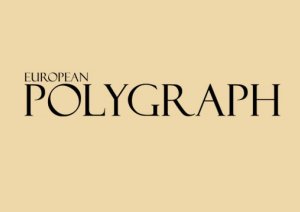Preparation to Experimental Testing of the Potential from Using Facial Temperature Changes Registered with an Infrared Camera in Lie Detection
Preparation to Experimental Testing of the Potential from Using Facial Temperature Changes Registered with an Infrared Camera in Lie Detection
Author(s): Jan Widacki, Michał Widacki, Jacek AntosSubject(s): Criminal Law
Published by: Oficyna Wydawnicza AFM Uniwersytetu Andrzeja Frycza Modrzewskiego w Krakowie
Keywords: infrared camera in lie-detection; thermovision in detection of deception
Summary/Abstract: Th e numerous organic changes related to emotions include fluctuations in blood pressure that can be observed and registered in alterations of pulse rate and blood pressure, and also as changes of blood fl ow in the bare parts of the body (face, back of the neck) that are visible with the naked eye. As changes in blood supply resulting from emotions are also accompanied by changes in the chemical composition of blood that result from the activity of endocrine glands issuing hormones into the bloodstream, changes in blood supply are also accompanied by changes of face temperature. Th e body temperature in a healthy human ranges from 36°C to 37°C, and its natural fluctuations may lie in the range of around 0.6°C (Konturek 2014: 495). Lowering of the body temperature is accompanied by dilation of blood vessels, sweating, and slowing or stopping of thermogenic mechanisms. Increase of temperature, on the contrary, is accompanied by the narrowing of blood vessels and increased thermogenesis (Konturek 2014: 498). Psychological and psychophysiological literature has long listed changes of body temperature as an indicator of emotions (see e.g.: Ax 1953; Hilgard 1972). Measurement of the changing temperature of individual parts of the face with classical methods, i.e. with the use of contact thermometers, was very diffi cult technically and impractical to the highest degree, hence it has essentially not been applied in practice. Such a measurement could have become relatively easier if a method of imaging heat radiation issued by physical bodies, i.e. thermography (thermal vision), were resorted to. Th is method is generally applied in an various sciences and also for practical purposes. A device used for the observation and measurement of facial temperature changes in this method is an infrared (thermal vision) camera. It can be used to detect the temperature of an observed object and its changes.
Journal: European Polygraph
- Issue Year: 10/2016
- Issue No: 1 (35)
- Page Range: 17-23
- Page Count: 7
- Language: English

